
Eurasian Journal of Emergency Medicine
Scope & Guideline
Exploring breakthroughs in emergency medical practices.
Introduction
Aims and Scopes
- Clinical Emergency Medicine:
The journal publishes research on various clinical aspects of emergency medicine, including diagnosis, treatment protocols, and management of acute conditions such as cardiac arrest, trauma, and poisoning. - Public Health and Emergency Preparedness:
It emphasizes studies related to public health impacts, especially in the context of disasters and pandemics, highlighting the importance of emergency preparedness and response strategies. - Innovative Techniques and Technologies in Emergency Care:
The journal explores advancements in medical technology and techniques, including point-of-care ultrasound, telemedicine, and novel treatment methods, crucial for improving patient outcomes in emergency settings. - Patient Safety and Quality of Care:
Research focusing on patient safety, quality assurance, and the psychological well-being of emergency healthcare workers is significant, reflecting the journal's commitment to enhancing the overall standard of care. - Epidemiology and Clinical Research in Emergency Settings:
The journal includes epidemiological studies that provide insights into the frequency and impact of various health issues in emergency departments, contributing to evidence-based practice.
Trending and Emerging
- Impact of COVID-19 on Emergency Medicine:
A significant amount of recent research has focused on the effects of the COVID-19 pandemic on emergency care, including changes in patient presentations, treatment protocols, and healthcare worker experiences, underscoring the pandemic's profound impact on the field. - Mental Health and Emergency Care:
Emerging studies are increasingly addressing mental health issues, particularly anxiety and stress among patients and healthcare workers in emergency settings, highlighting the importance of psychological support in emergency medicine. - Utilization of Technology in Emergency Services:
There is a growing trend in research exploring the use of technology, such as telemedicine and point-of-care diagnostics, to enhance emergency care delivery and patient management, reflecting the digital transformation in healthcare. - Interdisciplinary Approaches to Emergency Care:
Research that integrates various specialties and disciplines in emergency medicine is on the rise, promoting collaborative care models that improve patient outcomes and streamline emergency services.
Declining or Waning
- Traditional Trauma and Orthopedic Studies:
Research focusing solely on traditional trauma cases and orthopedic injuries has seen a decline, possibly due to an increasing emphasis on comprehensive and multidisciplinary approaches to trauma care. - Basic Life Support Training Studies:
While foundational, studies exclusively focused on basic life support training for healthcare providers have decreased, as the field shifts towards integrated training that combines advanced life support techniques and practical applications. - Historical Reviews of Emergency Medicine:
The publication of historical reviews or retrospective studies in emergency medicine has waned, indicating a trend towards more current and forward-looking research that addresses ongoing challenges and innovations. - Single-Country Case Studies:
There has been a reduction in research limited to single-country case studies, as there is a growing preference for comparative studies that encompass multiple regions or international perspectives to enhance the generalizability of findings.
Similar Journals

Clinical and Experimental Emergency Medicine
Transforming urgent care with impactful findings.Clinical and Experimental Emergency Medicine, published by the SEOUL KOREAN SOCIETY OF EMERGENCY MEDICINE, is a premier Open Access journal dedicated to advancing knowledge and practice within the fields of emergency medicine and emergency nursing. With an ISSN of 2383-4625 and an E-ISSN of 2383-4625, this journal has established itself prominently in the academic community, achieving a notable Q2 ranking in both Emergency Medicine and Emergency Nursing categories in 2023. The journal is committed to providing highly relevant research, innovative clinical practices, and educational resources that address the urgent and evolving challenges in emergency care. With a vision to foster collaboration among researchers, practitioners, and students, it aims to contribute significantly to the body of knowledge that enhances emergency medical services and improves patient outcomes globally. Accepting submissions and offering Open Access since its inception in 2014, the journal is positioned as a key resource for those dedicated to the advancement of emergency medicine.
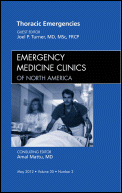
EMERGENCY MEDICINE CLINICS OF NORTH AMERICA
Exploring Innovations in Life-Saving PracticesEMERGENCY MEDICINE CLINICS OF NORTH AMERICA, published by W B SAUNDERS CO-ELSEVIER INC, stands at the forefront of the field of emergency medicine, providing a vital platform for interdisciplinary research and clinical insights. With an ISSN of 0733-8627 and E-ISSN 1558-0539, this journal has been a cornerstone for emergency medicine professionals since its inception in 1983 and continues to publish annually through 2024. The journal's impact is reflected in its 2023 Scopus ranking, where it is positioned #42 out of 109 in the emergency medicine category, securing a respectable Q2 quartile status. Although it does not offer open access at this time, its commitment to advancing emergency medicine knowledge is evident through its rigorously peer-reviewed articles that address critical clinical practices, evolving technologies, and important case studies. As a resource for researchers, practitioners, and students alike, EMERGENCY MEDICINE CLINICS OF NORTH AMERICA invites you to explore the latest trends and developments in this essential field of healthcare.

Journal of the American College of Emergency Physicians Open
Advancing Emergency Medicine Through Open Access KnowledgeJournal of the American College of Emergency Physicians Open is a prominent Open Access journal published by WILEY that has been committed to advancing the field of emergency medicine since its inception in 2020. As a vital resource for researchers, clinicians, and students, this journal aims to disseminate innovative research findings, clinical guidelines, and educational resources that support the rapidly evolving landscape of emergency care. With a solid Q1 ranking in the emergency medicine category and positioned within the top 25 ranks of Scopus’ emergency medicine listings, the journal ensures high visibility and accessibility for critical research. As an open-access publication, it provides unrestricted access to its content, facilitating knowledge sharing and collaboration among professionals globally. The journal's significant impact on the field is reflected in its growing influence, underlining its relevance as an essential platform for advancing emergency medicine practice and research.
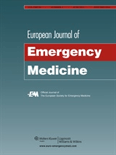
European Journal of Emergency Medicine
Connecting Research with Real-World Emergency SolutionsWelcome to the European Journal of Emergency Medicine, a premier publication dedicated to advancing the field of emergency medicine. Published by Lippincott Williams & Wilkins, this journal serves as a vital resource for researchers, practitioners, and students alike, delivering high-quality, peer-reviewed articles that reflect the latest advancements and best practices in emergency care. With its publication history dating back to 1994 and a projected convergence until 2024, the journal has established itself as an influential voice in the field, boasting a commendable Q2 ranking in Emergency Medicine as of 2023. The Scopus ranking further reinforces its prestige, placing it in the 73rd percentile among its peers. Although currently not an Open Access journal, the European Journal of Emergency Medicine remains committed to making critical knowledge accessible and impactful within the global medical community. We invite you to explore cutting-edge research, innovative studies, and key clinical insights that are essential for improving patient outcomes and advancing emergency medical practices.
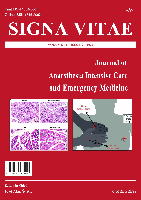
Signa Vitae
Fostering interdisciplinary dialogue for better patient outcomes.Signa Vitae is a distinguished academic journal published by MRE PRESS, focusing on critical care, intensive care medicine, and emergency medicine. Established in 2008 and running through 2024, this journal serves as an essential conduit for the dissemination of innovative research and clinical practices in these dynamic fields. Based in Croatia, Signa Vitae is indexed in Scopus, highlighting its importance within the scholarly community, boasting respectable quartiles with a Q3 ranking in both Critical Care and Intensive Care Medicine and Emergency Medicine as of 2023. Although it operates under a traditional access model, the journal aims to enhance knowledge sharing and interdisciplinary dialogue among researchers, healthcare professionals, and students globally, addressing the urgent challenges and advancements in patient care. By providing a platform for high-quality studies and reviews, Signa Vitae continues to advance the conversation and practice within critical and emergency medicine.

Annales Francaises de Medecine d Urgence
Innovating Practices for Critical CareAnnales Françaises de Médecine d'Urgence is a prominent journal dedicated to the field of Emergency Medicine, published by LAVOISIER. With an ISSN of 2108-6524 and E-ISSN of 2108-6591, this journal aims to disseminate vital research and innovative practices pertinent to emergency care, addressing the dynamic challenges faced by healthcare professionals in acute medical settings. While it operates under a non-open access model, it maintains an important role in advancing knowledge in the discipline, evidenced by its categorization in 2023 as Q4 in Emergency Medicine with a Scopus ranking of #85 out of 109, placing it in the 22nd percentile. Spanning years from 2011 to 2024, this journal serves as a platform for researchers, practitioners, and students committed to improving patient outcomes and advancing the science of emergency medicine. With its thoughtfully curated articles and studies, Annales Françaises de Médecine d'Urgence is a crucial resource for anyone who aims to stay at the forefront of developments in emergency medical care.

Turkish Journal of Emergency Medicine
Fostering collaboration in the realm of emergency care.Turkish Journal of Emergency Medicine, published by Wolters Kluwer Medknow Publications, is a premier Open Access journal dedicated to advancing the field of emergency and critical care medicine. With an ISSN of 2452-2473, the journal has established a global readership since its inception in 2014, ensuring that groundbreaking research is accessible to all. Situated in Turkey, this journal has been recognized for its significant contributions to the medical community, currently holding a Q2 rank in both Critical Care and Intensive Care Medicine and Emergency Medicine as of 2023. The journal aims to publish insightful articles that cover a wide range of topics within its scope, making it a crucial resource for researchers, healthcare professionals, and students who are committed to improving patient outcomes in emergency settings. Accessible online, it fosters collaboration and knowledge sharing across borders, positioning itself as an essential platform for the latest advancements in this critical discipline.

Frontiers in Emergency Medicine
Shaping the future of emergency medicine, one study at a time.Frontiers in Emergency Medicine, published by Tehran University of Medical Sciences, stands as an essential open-access platform dedicated to advancing research and practice in the diverse fields of emergency medicine, nursing, and medical services. With a focus on publishing high-quality studies that address the emerging challenges in prehospital and emergency care settings, this journal has rapidly gained recognition since its inception in 2021. The journal's current Scopus rankings place it favorably within the top quartiles for emergency medical services and emergency nursing, making it a valuable resource for researchers and practitioners aiming to enhance patient care and operational efficiency in emergency contexts. The journal encourages submissions that explore innovative practices, clinical outcomes, and policy developments in emergency medicine, promising accessibility and visibility for authors through its open-access model. Located in Iran, Frontiers in Emergency Medicine not only serves the regional community but also aspires to impact the global discourse in emergency healthcare.
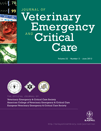
JOURNAL OF VETERINARY EMERGENCY AND CRITICAL CARE
Innovating critical care for our beloved animals.JOURNAL OF VETERINARY EMERGENCY AND CRITICAL CARE, published by WILEY, is a leading journal in the field of veterinary science, specifically focusing on emergency medicine and critical care for animals. With an impact factor that underscores its significance in the field, this journal serves as a crucial resource for veterinary professionals, researchers, and students dedicated to advancing the care of animals in critical conditions. Since its inception in 1991, the journal has continually contributed to the knowledge base and methodological advancements in veterinary emergency practices, consistently ranking in the Q1 category for veterinary sciences, as per the latest Scopus Ranks. Located in the United Kingdom, the journal is committed to disseminating high-quality, peer-reviewed research that addresses the challenges and innovations in veterinary critical care. With its goal to enhance clinical outcomes through evidence-based practices, the JOURNAL OF VETERINARY EMERGENCY AND CRITICAL CARE remains an essential platform for scholarly communication and collaboration in veterinary medicine.
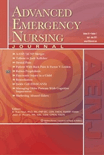
Advanced Emergency Nursing Journal
Empowering Professionals to Advance Patient CareAdvanced Emergency Nursing Journal, published by Lippincott Williams & Wilkins, stands as a key resource within the domains of Emergency Medicine and Emergency Nursing. With a commitment to advancing the field, this journal provides a platform for rigorous research, critical reviews, and innovative practices aimed at enhancing patient care in emergency settings. Though it holds a Q3 ranking in both related categories as per the 2023 metrics, its global reach spans various aspects of emergency care, promising insights that are crucial for both professionals and academics alike. Covering topics from clinical procedures to policy analysis, the journal invites submissions that aim to bridge theory and practice, highlighting the importance of evidence-based approaches in emergency nursing. Researchers, educators, and healthcare practitioners can Find more information and explore their own contributions in a dynamic environment that continuously evolves with the field. Whether you're seeking to stay current with the latest advancements or to publish your findings, this journal is an essential asset for those dedicated to improving care in urgent medical situations.